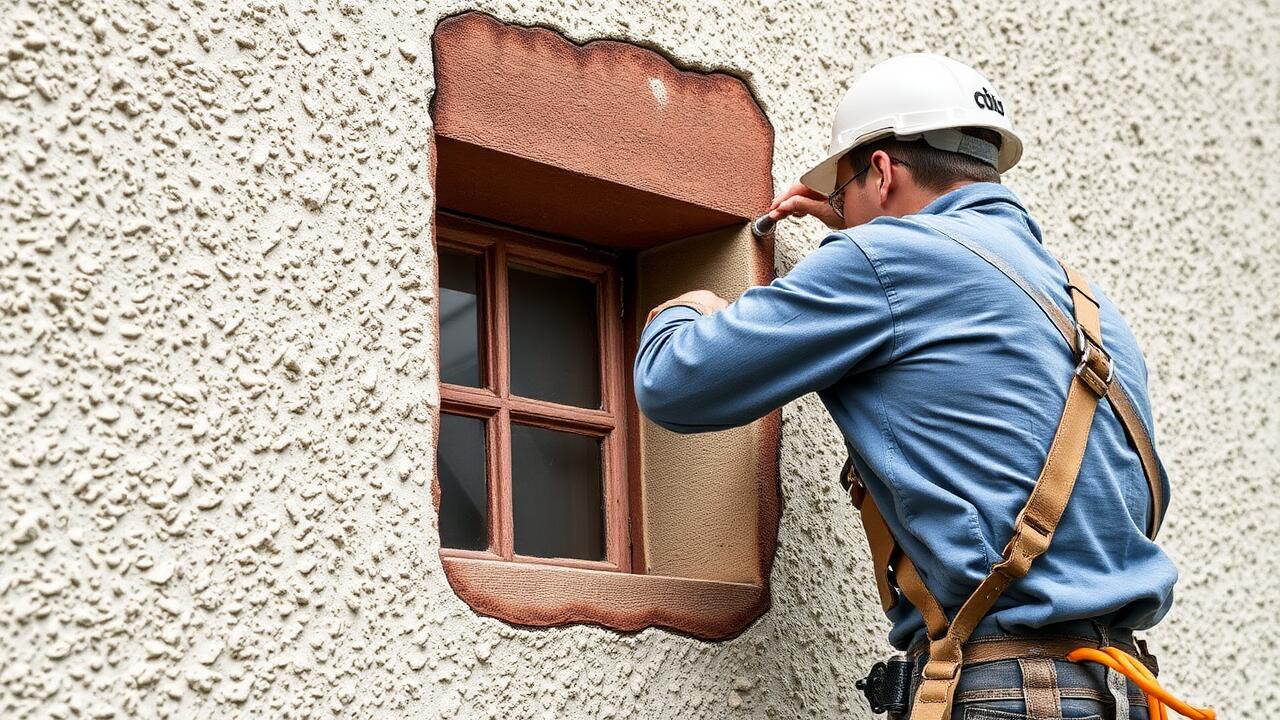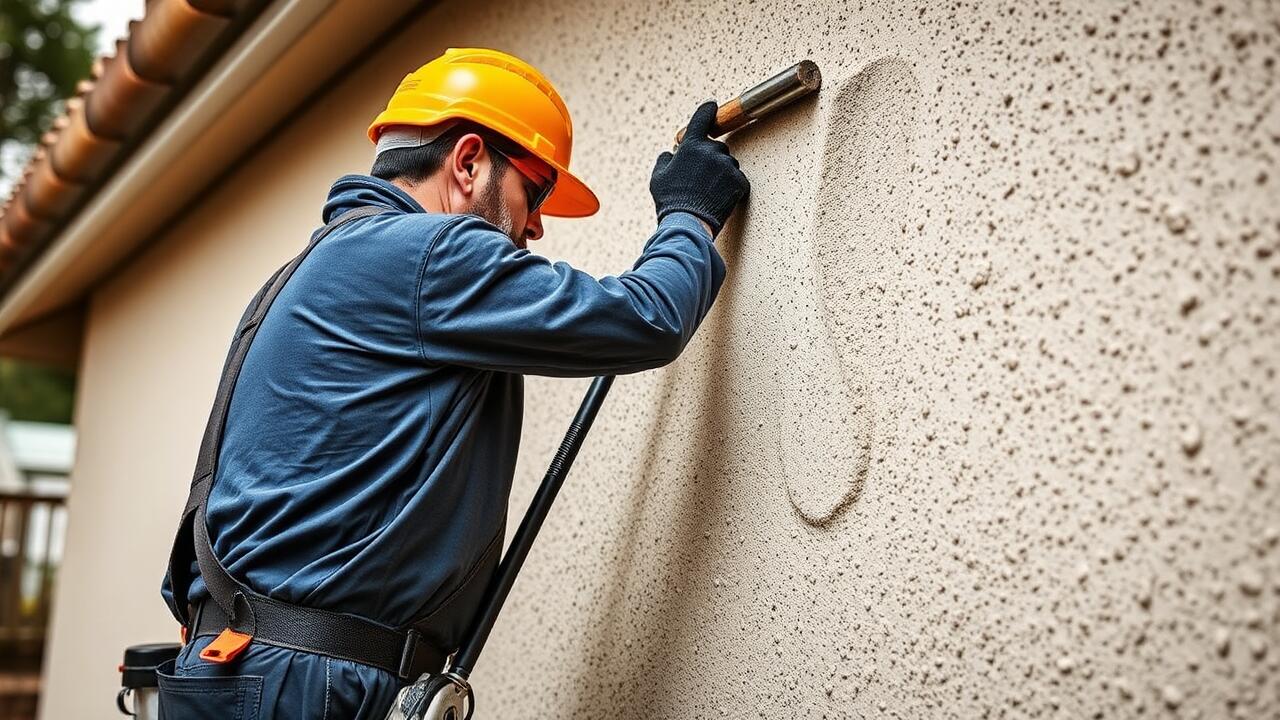
Texturing the Patch
Texturing the patch is a critical step in achieving a seamless repair on your exterior stucco surface. After applying the stucco mix to the hole and allowing it to set slightly, you can use various tools to match the existing texture. A sponge or a brush can create a subtle texture, while a trowel or putty knife can help refine the edges and blend the new patch with the surrounding area. For more pronounced textures, consider using stamps or rollers designed for stucco applications.
When performing Stucco Repair in Van Nuys, Los Angeles, understanding the different types of finishes can guide your texturing process. It is essential to closely observe the existing stucco to replicate any unique patterns or textures accurately. If the original finish includes a dash finish or a knockdown style, take your time to mimic these characteristics. Doing this will ensure a more cohesive look after the repair is complete, enhancing the overall aesthetic of your property.
Methods to Match Existing Stucco Finish
When attempting to match the texture of an existing stucco finish, it’s essential to analyze the original surface closely. Various techniques such as knockdown, dash, or smooth finishes can define the appearance of the stucco. Using tools like trowels or brushes can help replicate these textures effectively. For a more successful blend, try to mimic the size and pattern of the nearby finished areas. This attention to detail ensures that the new patch sufficiently integrates with the surroundings.
Testing the texture on a small, inconspicuous area before applying it to the main patch can also be beneficial. By doing so, you can make adjustments to achieve a closer match to the existing stucco. Additionally, if the repair requires professional assistance, consider reaching out for services like Stucco Repair in Los Feliz, Los Angeles. Experts in such repairs can offer insight into the best methods and materials suitable for your home, ensuring a finish that meets both aesthetic and functional expectations.
Curing the Patch
Curing the patch is a critical step in ensuring the durability and effectiveness of your stucco repair. After applying the patch material, allow it to set properly before subjecting it to any stress or environmental factors. Typically, this involves letting the patch dry adequately for several days. During this period, it's advisable to keep the area moist by lightly misting it with water. This helps to prevent cracking and ensures a strong bond as the materials cure.
In the context of Stucco Repair in Van Nuys, Los Angeles, local weather conditions may impact drying times. High temperatures and low humidity can accelerate drying, potentially leading to issues if not carefully monitored. Conversely, cooler and more humid conditions may prolong the curing process. Therefore, assessment of the local climate is essential when planning your stucco repairs. Understanding these environmental factors can lead to a successful and lasting repair.
Importance of Proper Drying Time
Proper drying time is critical for a successful stucco repair. If the patch is not allowed to dry completely, it may develop cracks or fail to adhere properly to the surrounding material. This can lead to a cascade of further issues, such as moisture infiltration and deterioration of the building's exterior. When performing stucco repair in Van Nuys, Los Angeles, understanding the local climate can also inform the drying process. Humidity and temperature fluctuations can affect the rate at which the patch cures.
Additionally, a well-dried patch will ensure that any finishing touches, such as texturing or painting, adhere effectively. Rushing this stage can result in a less-than-optimal finish and may necessitate further repairs down the line. Taking the time to allow your stucco repair to cure adequately strengthens the overall integrity of the work and enhances the aesthetic appeal of your home.
Painting the Repaired Area
Once the stucco patch has fully cured, the next step is to paint the repaired area. Choosing the right paint is essential for ensuring a seamless blend with the surrounding surface. Look for high-quality acrylic or elastomeric paints that are specifically designed for stucco applications. These types of paint offer durability and flexibility, allowing the stucco to breathe while protecting it from moisture and harsh weather conditions.
When it comes to applying the paint, consider using a spray application for a more uniform finish that mimics the existing texture. Alternatively, a roller can provide good coverage, especially for smaller areas. For those seeking professional assistance with their projects, Stucco Repair in West Adams, Los Angeles, can offer expert service to achieve an optimal look and restore the integrity of your exterior finish. Remember to apply multiple thin coats if necessary to achieve the desired color and texture.
Selecting the Right Paint for Stucco
Choosing the right paint for stucco is essential for ensuring a long-lasting and aesthetically pleasing finish. Stucco surfaces often require specific types of paint designed to adhere well and allow for moisture vapor to escape. Look for breathable paints that can withstand the unique challenges posed by exterior conditions. These products typically include acrylic or elastomeric options, which provide flexibility and protection from the elements.
For those considering Stucco Repair in Encino, Los Angeles, it is beneficial to match the paint color with the existing stucco finish. Many local hardware stores offer color-matching services or pre-mixed paints that can closely replicate the original hue of your home. Additionally, test a small patch before applying the final coat to ensure the desired outcome. Proper paint selection not only enhances visual appeal but also contributes to the durability of your repair.
FAQS
What materials do I need to patch an exterior stucco hole?
To patch an exterior stucco hole, you will typically need stucco patching compound, a trowel, a putty knife, a wire brush, water, a sponge, and possibly a spray bottle for misting. If you plan to texture the patch, you may also need additional tools or materials to match the existing finish.
How can I match the texture of the existing stucco?
To match the texture of the existing stucco, you can use various methods, such as a brush or sponge technique, applying a texture stamp, or using a spray texture. It’s helpful to practice on a piece of cardboard or a similar surface before applying it to the patched area.
How long does the patch need to cure before painting?
The patch should cure for at least 24 to 48 hours, depending on the conditions and the product used. It's important to ensure the patch is fully dry and cured to prevent moisture from getting trapped under the paint.
What type of paint is best for stucco surfaces?
The best type of paint for stucco surfaces is a 100% acrylic latex paint, as it provides excellent adhesion, flexibility, and durability. It’s also important to choose a paint that is specifically formulated for exterior use to withstand the elements.
Can I use regular wall paint on my stucco patch?
While you can technically use regular wall paint on a stucco patch, it is not recommended. Regular interior paint may not adhere well to the rough texture of stucco and won’t provide the durability needed for outdoor conditions. It's best to use paint specifically designed for stucco surfaces.
